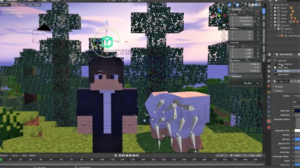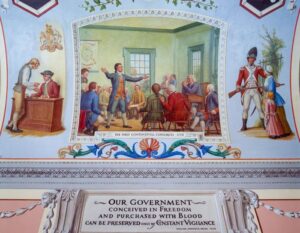Advanced 3D Minecraft Building Techniques: Mastering Voxel Construction takes you beyond the basics, exploring the intricacies of crafting stunning and complex structures in the iconic block-based world. This journey delves into the unique challenges and rewards of voxel-based building, offering a comprehensive guide to unlocking your creative potential.
From laying the groundwork with foundational building techniques to harnessing the power of redstone mechanics, you’ll learn to manipulate voxels with precision, creating everything from smooth curves and rounded shapes to intricate balconies and towering domes. The guide explores the nuances of resource management, efficient building strategies, and the transformative potential of mods and plugins, empowering you to build beyond the limitations of vanilla Minecraft.
Introduction to Voxel Construction
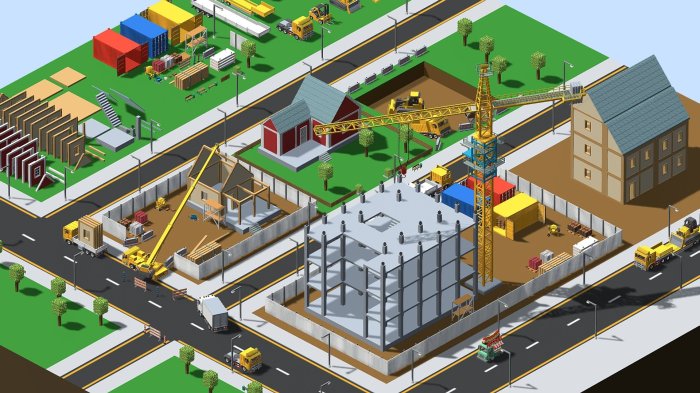
Minecraft’s building system revolves around voxels, 3D blocks that form the foundation of every structure. Understanding voxel construction is essential for mastering advanced building techniques.Voxels offer a unique approach to 3D modeling, differing significantly from traditional methods.
Voxel Properties and Limitations
Voxel-based construction presents both advantages and limitations.
- Discrete Nature:Voxels are indivisible units, meaning structures are built by assembling blocks rather than manipulating continuous surfaces. This creates a distinct, pixelated aesthetic.
- Limited Resolution:The size of a voxel restricts the level of detail achievable. While advancements in texture packs and shaders can enhance visual fidelity, the underlying voxel grid remains a defining factor.
- Block-Based Design:Voxel construction encourages a block-based approach to design, prioritizing geometric shapes and creative combinations of blocks. This contrasts with the free-flowing curves and organic forms possible in traditional 3D modeling.
Iconic Minecraft Structures
Minecraft’s vast community has produced countless breathtaking structures that showcase the potential of voxel construction.
- The Great Wall of China:This monumental structure, recreated in Minecraft, demonstrates the ability to build vast, intricate structures using voxels. Its scale and attention to detail are a testament to the power of voxel construction.
- The Eiffel Tower:This iconic landmark, replicated in Minecraft, showcases the potential of voxels for capturing the essence of architectural masterpieces. The tower’s intricate details, including its delicate latticework, are rendered faithfully using blocks.
- Floating Islands:These ethereal structures, often found in Minecraft builds, highlight the flexibility of voxel construction. They demonstrate the ability to create surreal and imaginative landscapes using blocks, defying the constraints of traditional architectural principles.
Mastering Basic Building Techniques
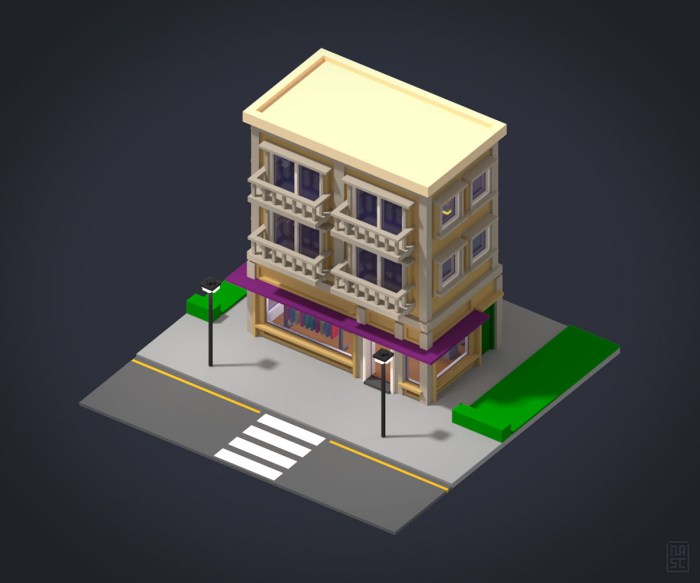
Building in Minecraft involves constructing foundational elements like walls, floors, and roofs. Understanding the fundamentals of voxel construction allows you to create intricate structures and expand your creative possibilities. This section delves into essential techniques and concepts that will enhance your building skills.
Planning and Grid-Based Design
Planning is crucial in Minecraft building, especially when constructing complex structures. A grid-based design approach helps to ensure symmetry, consistency, and ease of construction. The Minecraft world is divided into a grid of blocks, providing a framework for precise placement and alignment.
By using this grid, you can create buildings with clean lines and accurate dimensions.
“Planning your structure before you start building can save you a lot of time and frustration in the long run.”
Constructing Walls, Floors, and Roofs
- Walls:Walls are the foundational elements of most structures. They provide support and enclose space. To build a wall, place blocks in a vertical line, extending them to the desired height. You can use different materials for walls, such as stone, wood, or brick, to create various aesthetics.
- Floors:Floors provide a base for your structure and define its ground level. To construct a floor, place blocks horizontally, creating a flat surface. You can use materials like wood planks, stone slabs, or even carpets for flooring.
- Roofs:Roofs protect your structure from the elements and add architectural interest. A simple roof can be created by placing blocks in a sloping pattern, extending outwards from the walls. For more complex roofs, consider using stairs or slabs to create different angles and shapes.
Creating Smooth Curves and Rounded Shapes
Minecraft’s voxel-based nature presents a challenge when creating smooth curves and rounded shapes. However, several techniques can be employed to achieve realistic curves and rounded forms.
- Stair and Slab Combinations:Stairs and slabs can be used to create gentle curves. By placing stairs and slabs strategically, you can create a gradual transition between straight lines and rounded shapes. This technique is particularly useful for creating curved walls, balconies, or arches.
- Circular Designs:Circular designs can be created using blocks, stairs, and slabs in a circular pattern. Start by placing a block in the center, then surround it with blocks in a circular arrangement. Use stairs and slabs to fill in the gaps and create a smooth curve.
This method is effective for creating round towers, domes, or even circular rooms.
- Voxel Art Tools:There are various voxel art tools available that can assist in creating smooth curves and rounded shapes. These tools often allow you to sculpt and manipulate voxels, enabling you to create intricate and complex designs. Some popular tools include MagicaVoxel and VoxelMax.
Advanced Building Techniques
Now that you’ve mastered the fundamentals, let’s delve into the world of advanced building techniques in Minecraft. This section will explore ways to elevate your creations from simple structures to complex, interactive masterpieces. We’ll dive into the fascinating realm of Redstone mechanics, learn to design unique architectural features, and discover how to enhance your builds with various materials and textures.
Redstone Mechanics and Interactive Structures
Redstone is a crucial element in Minecraft that enables the creation of complex and interactive structures. Redstone dust, a material that transmits electrical signals, forms the backbone of these mechanisms. By strategically placing redstone dust, torches, repeaters, and other components, you can control various aspects of your builds, including doors, pistons, and even elaborate contraptions.
- Redstone Dust:The foundation of redstone circuits, redstone dust transmits signals over a distance. When placed next to a power source like a redstone torch, it becomes energized and emits a signal. This signal can be used to activate other redstone components or mechanisms.
Mastering voxel construction in Minecraft isn’t just about building cool castles; it’s about understanding the fundamental building blocks of virtual worlds. As we delve deeper into the intricate details of advanced 3D building techniques, we can’t help but wonder about the future of Minecraft.
What’s next for this iconic game? Will we see more realistic textures, even more complex building mechanics, or entirely new ways to interact with the world? Check out this article on The Future of 3D Minecraft: What to Expect?
to get a glimpse into the exciting possibilities. No matter what the future holds, the ability to manipulate voxels will remain a core skill for any Minecraft master builder.
- Redstone Torches:These are essential power sources for redstone circuits. When placed on a block, a redstone torch emits a constant redstone signal, energizing nearby redstone dust. The torch’s signal can be deactivated by placing a block in front of it, effectively turning off the circuit.
- Redstone Repeaters:These components amplify and extend the range of redstone signals. They are crucial for controlling the timing and distance of redstone signals in complex circuits.
- Redstone Comparators:These versatile components compare the strength of two redstone signals. They are commonly used in various applications, including sorting mechanisms, redstone clocks, and even detecting the amount of items in a chest.
- Redstone Lamps:These blocks illuminate when powered by a redstone signal. They are commonly used as visual indicators in redstone circuits, displaying the status of a mechanism or a specific condition.
“Redstone is a powerful tool that can transform your Minecraft builds into interactive masterpieces. By understanding the fundamentals of redstone circuits, you can unlock a whole new level of creativity and complexity.”
Designing Custom Buildings with Unique Architectural Features
Building unique structures with distinct architectural features can add a touch of personality and grandeur to your Minecraft world. Here are some examples of features you can incorporate into your designs:
- Balconies:Balconies offer breathtaking views and add a touch of elegance to your buildings. They can be created by extending a floor outward and adding railings for safety and aesthetics.
- Staircases:Staircases provide access to different levels of your building, adding functionality and visual appeal. Experiment with different designs, such as straight staircases, spiral staircases, or even floating staircases for a more modern look.
- Domes:Domes are a classic architectural feature that adds a sense of grandeur and majesty to your buildings. They can be constructed using a variety of materials and techniques, creating a unique visual impact.
Material and Texture Applications for Enhanced Visual Appeal
The choice of materials and textures plays a crucial role in determining the overall aesthetic appeal of your builds. Experimenting with different blocks and textures can significantly enhance the visual impact of your creations.
- Stone and Brick:These materials are commonly used for building foundations, walls, and other structural elements. Different types of stone, such as granite, sandstone, and cobblestone, offer unique textures and colors, adding variety to your builds.
- Wood:Wood is a versatile material that can be used for creating floors, walls, furniture, and decorative elements. Different types of wood, such as oak, spruce, and birch, offer distinct colors and textures, allowing you to customize your builds to your liking.
- Glass:Glass is a transparent material that can be used for creating windows, doors, and other decorative elements. It allows light to penetrate your buildings, creating a sense of openness and spaciousness.
- Wool:Wool is a soft material that comes in a variety of colors. It can be used for creating carpets, rugs, and other decorative elements, adding a touch of color and texture to your builds.
Techniques for Large-Scale Structures
Building large structures in Minecraft presents unique challenges, from managing resources to maintaining structural integrity. However, with the right techniques, you can create impressive and awe-inspiring architectural marvels.
Resource Management and Efficiency
Efficient resource management is crucial for large-scale projects. Carefully planning your design and resource requirements can save time and materials.
- Prioritize resource gathering:Before starting construction, gather essential resources like wood, stone, and iron in bulk. This minimizes the need to interrupt building for resource collection.
- Utilize automated systems:Implement automated farms and mining systems to streamline resource acquisition. This frees up time for more complex building tasks.
- Employ efficient building techniques:Use techniques like pre-fabrication and modular design to reduce repetitive tasks and optimize resource usage.
Creating Impressive Landscapes and Terrain Features
Large-scale projects often involve shaping the landscape to create dramatic environments. Mastering terrain manipulation techniques is key to creating captivating scenery.
- Utilize terrain generation tools:Minecraft offers tools like WorldEdit that allow for efficient terrain manipulation. Learn to use these tools to create mountains, valleys, and other features.
- Master terraforming techniques:Employ techniques like layering, smoothing, and texturing to create realistic and visually appealing landscapes.
- Implement water features:Water can add depth and beauty to your landscapes. Use waterfalls, lakes, and rivers to enhance the visual appeal of your creations.
The Power of Mods and Plugins
Vanilla Minecraft offers a solid foundation for building, but its limitations can feel restrictive for ambitious builders. This is where mods and plugins come in, expanding your creative potential and allowing you to build structures that were previously impossible.Mods and plugins are like add-ons that modify Minecraft’s core gameplay, introducing new blocks, items, tools, and mechanics.
They essentially empower you to go beyond the limitations of the base game, allowing you to build intricate structures, explore new gameplay styles, and even create your own unique worlds.
Types of Mods and Plugins
Mods and plugins can be categorized based on their functionalities. Some popular categories include:
- Building Mods:These mods enhance building tools and add new materials, making the construction process smoother and more versatile. Examples include “Chisel” which allows for intricate carvings and custom block designs, and “Biomes O’ Plenty” which introduces new biomes with unique blocks and resources.
- World Generation Mods:These mods modify the way Minecraft’s worlds are generated, creating unique landscapes, biomes, and structures. Popular examples include “Terraforged” which generates realistic and aesthetically pleasing terrains, and “Better Dungeons” which adds more interesting and challenging dungeons to explore.
- Gameplay Mods:These mods modify the core gameplay mechanics, adding new features, challenges, and gameplay styles. Examples include “JourneyMap” which provides a detailed map of the world, and “The Twilight Forest” which adds a vast new dimension with its own unique creatures, structures, and challenges.
Using Mods Effectively
Using mods effectively requires understanding their functionalities and how they interact with each other.
- Compatibility:It’s crucial to ensure that the mods you choose are compatible with each other and with your Minecraft version. Compatibility issues can lead to crashes, glitches, or unexpected behavior.
- Modpacks:Many mods are packaged together into “modpacks,” which provide a curated set of mods that work well together. Using modpacks can simplify the process of installing and managing mods, ensuring compatibility and a cohesive gameplay experience.
- Modding Platforms:Several platforms, such as CurseForge and Modrinth, host a vast collection of mods and modpacks. These platforms provide detailed information about each mod, including compatibility, installation instructions, and user reviews.
Showcase Your Masterpieces
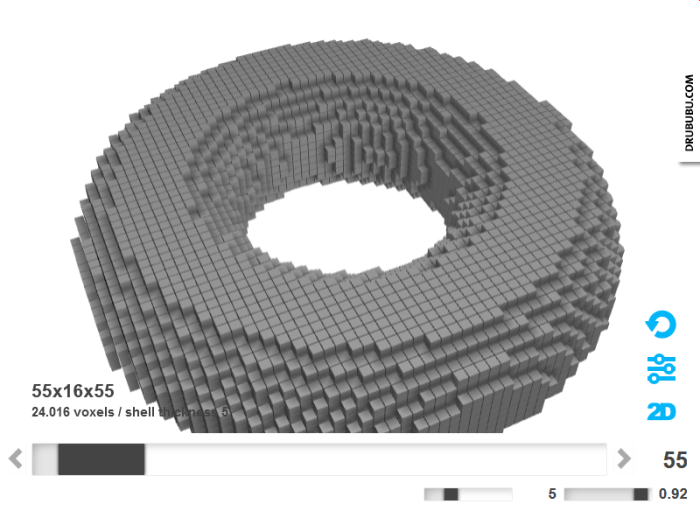
Now that you’ve mastered the fundamentals and explored advanced techniques, it’s time to unleash your creativity and construct truly remarkable Minecraft creations. This section will showcase a variety of stunning structures, highlighting the diverse possibilities of voxel construction. We’ll explore different building styles, delve into complex designs, and uncover the potential of functional structures, all while providing insights into the techniques used to bring these masterpieces to life.
Examples of Advanced Building Techniques
This section will illustrate the versatility of advanced building techniques through a collection of captivating structures. Each example will showcase a specific technique and highlight its unique application in crafting intricate designs.
- Organic Structures:Imagine a sprawling treehouse nestled within the canopy of a massive oak tree. The branches serve as supports, while the leaves form the walls, creating a natural and enchanting living space. This structure exemplifies the power of organic building techniques, where curves and flowing lines mimic the beauty of nature.
The key to achieving this style lies in understanding how to manipulate individual blocks to create smooth, rounded shapes, similar to the curves found in nature. This technique requires careful planning and a keen eye for detail, as each block placement contributes to the overall organic aesthetic.
- Geometric Precision:A towering skyscraper, its sharp edges piercing the sky, showcases the precision of geometric building techniques. This style emphasizes clean lines, symmetrical shapes, and a sense of order. The structure’s intricate details, such as windows, balconies, and decorative elements, are meticulously crafted using precise block placements and geometric patterns.
This technique is particularly effective for creating modern and futuristic structures, where the focus is on form and functionality.
- Textured Surfaces:A majestic castle, its walls adorned with intricate carvings and detailed textures, exemplifies the power of texturing techniques. These techniques involve using different blocks and materials to create realistic surfaces, adding depth and visual interest to structures. This approach can be used to create realistic stonework, weathered wood, or even shimmering metal surfaces.
- Realistic Lighting:Imagine a dimly lit tavern, its interior bathed in the warm glow of flickering candles. This scene showcases the importance of realistic lighting in creating immersive environments. Lighting techniques involve strategically placing light sources, such as torches, lanterns, and glowstone, to create shadows, highlights, and a sense of depth.
Building a Complex Structure: A Step-by-Step Guide
This section will provide a detailed walkthrough of constructing a complex structure, highlighting key techniques and considerations along the way. The chosen structure will demonstrate the application of various advanced building techniques, offering a comprehensive guide for aspiring builders.Imagine constructing a sprawling city within the Minecraft world.
This ambitious project requires a deep understanding of advanced building techniques, as well as meticulous planning and execution. The city’s layout, encompassing residential areas, commercial districts, and public spaces, will showcase the power of large-scale building techniques, including:
- Planning and Design:Before embarking on such a monumental project, it’s crucial to meticulously plan the city’s layout, considering factors such as scale, functionality, and aesthetics. This involves creating detailed blueprints, outlining the placement of buildings, streets, and other essential elements.
- Building Foundations:Laying a solid foundation is paramount for ensuring the stability of large-scale structures. This involves using durable materials, such as stone or concrete, and carefully aligning the foundation to ensure a level and stable base.
- Constructing Buildings:Each building within the city will require careful planning and construction. This involves considering the building’s purpose, its architectural style, and the materials used. Advanced building techniques, such as the use of scaffolding, intricate block placements, and detailed texturing, will be employed to create visually stunning and functional structures.
- Creating Public Spaces:Public spaces, such as parks, plazas, and markets, add vibrancy and life to the city. These areas require careful design, considering factors such as pedestrian flow, accessibility, and aesthetics.
- Integrating Infrastructure:Essential infrastructure, including roads, bridges, and utilities, is crucial for a functioning city. These elements require careful planning and execution, ensuring smooth connectivity and efficient resource management.
Showcase by Building Style
This section will categorize structures based on their building style, offering a diverse range of visual inspiration. Each category will highlight the unique characteristics of the style and showcase examples of remarkable structures.
- Modern Architecture:This style emphasizes clean lines, geometric shapes, and a minimalist aesthetic. Examples include sleek skyscrapers, futuristic dwellings, and minimalist gardens.
- Medieval Architecture:This style evokes a sense of history and grandeur, characterized by towering castles, fortified walls, and intricate stonework. Examples include majestic castles, sprawling fortresses, and charming villages.
- Organic Architecture:This style seeks to mimic the beauty of nature, incorporating curves, flowing lines, and natural materials. Examples include treehouses, cave dwellings, and gardens inspired by natural landscapes.
- Fantasy Architecture:This style embraces imagination and creativity, drawing inspiration from mythology, fantasy literature, and video games. Examples include towering towers, magical forests, and whimsical castles.
Showcase by Complexity, Advanced 3D Minecraft Building Techniques: Mastering Voxel Construction
This section will categorize structures based on their level of complexity, offering a range of challenges for builders of all skill levels. Each category will highlight the techniques and considerations involved in constructing structures of varying complexity.
- Simple Structures:These structures are relatively easy to build, requiring basic building techniques and a limited number of blocks. Examples include small houses, simple bridges, and basic farms.
- Intermediate Structures:These structures require a greater understanding of building techniques and involve more complex designs. Examples include larger houses, elaborate bridges, and intricate gardens.
- Complex Structures:These structures are highly challenging to build, requiring a mastery of advanced building techniques, meticulous planning, and extensive time commitment. Examples include sprawling cities, intricate castles, and elaborate monuments.
Showcase by Functionality
This section will categorize structures based on their functionality, highlighting the practical applications of advanced building techniques. Each category will showcase examples of structures that serve a specific purpose, demonstrating the potential of voxel construction beyond mere aesthetics.
- Residential Structures:These structures provide living spaces for players, offering comfort and functionality. Examples include houses, apartments, and villages.
- Commercial Structures:These structures serve commercial purposes, providing goods and services to players. Examples include shops, markets, and banks.
- Industrial Structures:These structures are used for production and manufacturing, providing essential resources for players. Examples include factories, mines, and farms.
- Public Structures:These structures serve the public good, providing essential services and facilities for players. Examples include hospitals, schools, and libraries.
Conclusion: Advanced 3D Minecraft Building Techniques: Mastering Voxel Construction
By the end of this exploration, you’ll be equipped with the knowledge and skills to create breathtaking masterpieces that showcase your mastery of voxel construction. Whether you’re building grand castles, intricate landscapes, or functional contraptions, the techniques and insights shared here will inspire you to push the boundaries of your creativity and transform your Minecraft world into a testament to your architectural prowess.
